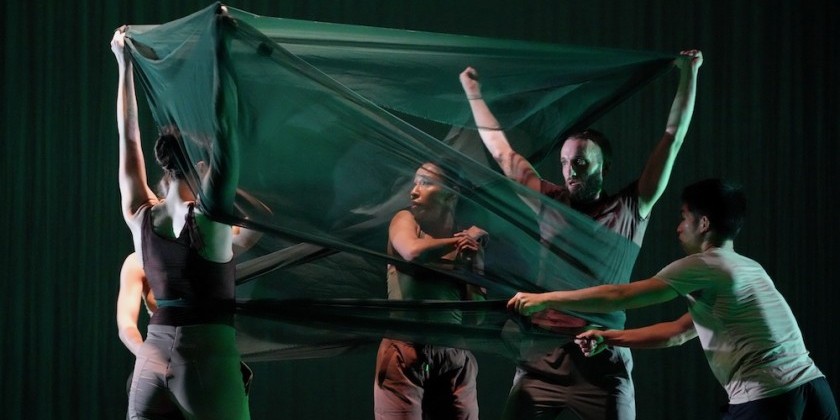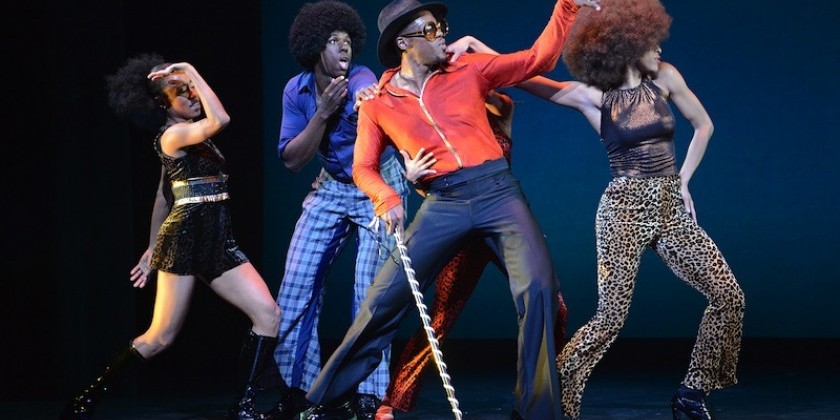Impressions of: Alvin Ailey American Dance Theater

at New York City Center
Alvin Ailey American Dance Theater
New York City Center, December 4-January 5, 2014
So, once again, it’s winter. It’s City Center. And if you thought you knew what makes Ailey Ailey, think again.
Under the direction of Robert Battle, the world’s most popular dance troupe, with the world’s most diverse and receptive audiences, continues to surprise and challenge its fans. And those audiences keep showing their capacity to go the distance.
Here’s what they’ve come to expect: Excellent physical instruments? Check. Powerful, silky, sleek technique? Check. Charisma and hard work, too? Check and check.
So what makes Ailey Ailey now?
The troupe has the chance to be redefined with every new choreographer Battle, the master strategist, enlists. One of this season’s programs features pieces by three mavericks of the field. Britain’s Wayne McGregor is represented by Chroma (2006), made for The Royal Ballet. Janet Wong restaged the first section of Bill T. Jones’s Bessie-winning D-Man in The Waters (1989/1998). And Canada’s Aszure Barton contributed the world premiere of Lift.

Most of the Joby Talbot/Jack White III music for Chroma is atrocious enough–grating, bombastic and relentless--to make me want to stand up and slap it back. It reminds me of how certain action movie scores pump the drama--and the blood pressure--but it’s even more smothering and ludicrous. Then again, it’s absolutely right for McGregor’s manic choreography with its abstract, high-whipped cocktail of whizbang, danger and eros.
There’s a self-consciousness in all of this that slips between viewer and dancer, obscuring the human individuality of the latter. Which dumps us right back into a problem the company had with far more conventional choreography: Who are these dancers? Surely more than moving sculpture or decoration in space.
Even the quieter, more languid segments of Chroma draw you to focus on body parts rather than whole people. Look what these legs can do! How many ways can I pull this taffy...I mean, this body? Audiences do have a legitimate taste for this kind of flash and, without doubt, the Ailey dancers know how to feed that taste.
Subtle tweaks in form and lighting alter the way Chroma’s sterile container of a set (by John Pawson) holds and frames these dancers, and I have a taste for subtlety.
. Photo by Paul Kolnik_04.jpg)
Part I of D-Man in the Waters, set to Mendelssohn’s Octet for Strings in E-flat major, Op. 20, is a bright, bounding thing that sends the ensemble skidding across the stage like tossed strands of beads. Made in honor of a Jones dancer, the late Demian “D-Man” Acquavella, while that performer fiercely defied AIDS and approaching death, this passage celebrates the fight in the man, the will to elegantly dive or impudently bellyflop into whatever the hell life brings you. For its original purpose and meaning, it would be moving enough. But it’s moving, too, to see the Ailey gang take to D-Man with such open pleasure, to clearly make it personal. I’m looking at you, Alicia Graf Mack. You, too, Michael Francis McBride.
Aszure Barton can display unusual command and panache, particularly when faced with a large army of dancers on stage. As a longtime admirer, I selected this Ailey program expressly to see Lift but came away wishing that she had had more time with the busy company and had gone deeper. Lift appeared to fetishize these dancers’ bodies in a way similar in result, if not in style, to McGregor’s Chroma.
Ailey is still largely, if never exclusively, a company of African descent; theatrical presentation of the Black body–particularly by a white choreographer--comes with fraught historical baggage. Watching Lift, you get a sense of what Ailey qualities made the strongest impressions on Barton.

For an unusually long time, she directs our gaze away from the dancers’ faces, training focus and detail-enhancing light on the writhing muscles of men’s bare backs as they move to Curtis MacDonald’s stuttering percussion. The men tumble sideways, arch their arms like condor wings, undulate–not a radical re-imagination. I found it impossible to look at the women, in their attractive, feathery skirts, and not think of Josephine Baker. In the absence of any readable, defining purpose to the repeated and lengthy use of strict unison movement for groups, Lift looks ethnographic.
Only the venerable Matthew Rushing, a past Ailey star guesting with the troupe this season, overcomes this focus on type as he dances solo to the beautiful plucking of an mbira (African thumb piano) in the music. Barton gives us whole moments to study his alert face and the fine shifts in his movement. This is not merely Strong, Gorgeous Black Man Dancing but an individual with something specific, and electrifying, to say to you.
Lift seems less a conversation than an opening chat between Barton and the Ailey dancers. Since Barton and Battle have a long history as friends and colleagues, I trust a true conversation will commence.
Follow Eva Yaa Asantewaa on Twitter @magickaleva











